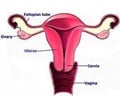A new study has said that the right method of Hormone Replacement Therapy (HRT) taken at the right age can determine a woman's risk of having a heart-attack.
A new study has said that the right method of Hormone Replacement Therapy (HRT) taken at the right age can determine a woman's risk of having a heart-attack.
In the Danish study on the association between hormone replacement therapy (HRT) and heart attacks, scientists have found that it's not what women take but the way they take it that produces different results in women who take hormone replacement therapy.The study is the largest to look at the effects of HRT since the Women's Health Initiative trial was stopped early after finding that HRT increased the risk of women developing a range of conditions including breast cancer and thromboembolism.
It is an observational study of 698,098 healthy Danish women, aged 51-69, who were followed between 1995-2001.
It was found that overall there was no increased risk of heart attacks in current users of HRT compared to women who had never taken it.
But what it found was that in younger women (aged 51-54) who were taking HRT during the period of the study, the risk of heart attacks was about a quarter (24percent) more than in women who had never taken HRT. Also, in younger women there was an increasing risk with longer duration of HRT, which was not seen in the older age groups.
The study indicated that continuous HRT (a continuous combination of oestrogen and progesterone) carried a 35 percent increased risk of heart attacks as compared to women who had never used HRT.
Advertisement
If the method of taking the oestrogen was via a patch or gel on the skin or in the vagina, the risk of heart attack reduced by more than a third (38 percent and 44 percent respectively).
Advertisement
In her opinion, the study produced similar results to the WHI study (a randomised controlled trial) for comparable HRT treatments, and that this suggested that the results from her study for the other, non-comparable treatments were valid.
Since the WHI trial was stopped, no further randomised controlled trials of HRT have been started.
"This study is the first, big observational study that addresses the influence of various regimens, doses and routes of administration. In this 'post randomised era' where randomised studies on HRT are not easily performed, it provides important new information," said Dr Lokkegaard.
The study was published online in Europe's leading cardiology journal, the European Heart Journal.
Source-ANI
RAS/M













